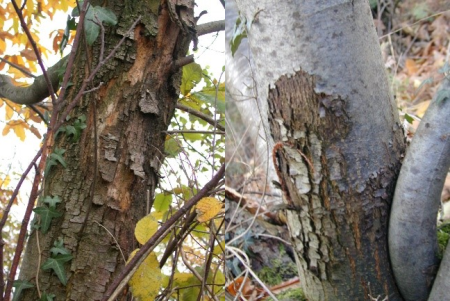
Objective:
A method is resented to reduce the severity of cankers caused by chestnut blight, Cryphonectria parasitica. This pathogenic fungus penetrates and necroses cortical tissues, which provoke mortality of adult trees aerial parts and failure of grafting.
In the 1970s, French researchers developed a biological control method using hypovirulent strains of the fungus. Since then, a research programme at INRA conducted with several organisations (Chambers of Agriculture, Union of Chestnut production Associations, the Forest Health Department) aims at clarifying and improving thecontrol methods.
Context:
Hypovirulent strains are characterized by their low virulence, which makes them unable to penetrate the tree's defences in response to infection. The necrosis caused is restricted to the superficial area of the bark, and the canker is thus rapidly healed without causing mortality. Hypovirulence is induced by virus which reduces the pathogenicity of the fungus. When a hypovirulent strain is applied around a canker, the virus is transmitted from this strain of C. parasitica to the virulent causing the canker. But within C. parasitica there are several vegetative compatibility group: two strains fuse only if they belong to the same vegetative compatibility group or to two closely related groups.
Contacts:
Further information:
Robin, Cécile & Heiniger, Ursula. (2001). Chestnut blight in Europe: Diversity of Cryphonectria parasitica, hypovirulence and biocontrol. For. Snow Landsc. Res. 76. 361-367.